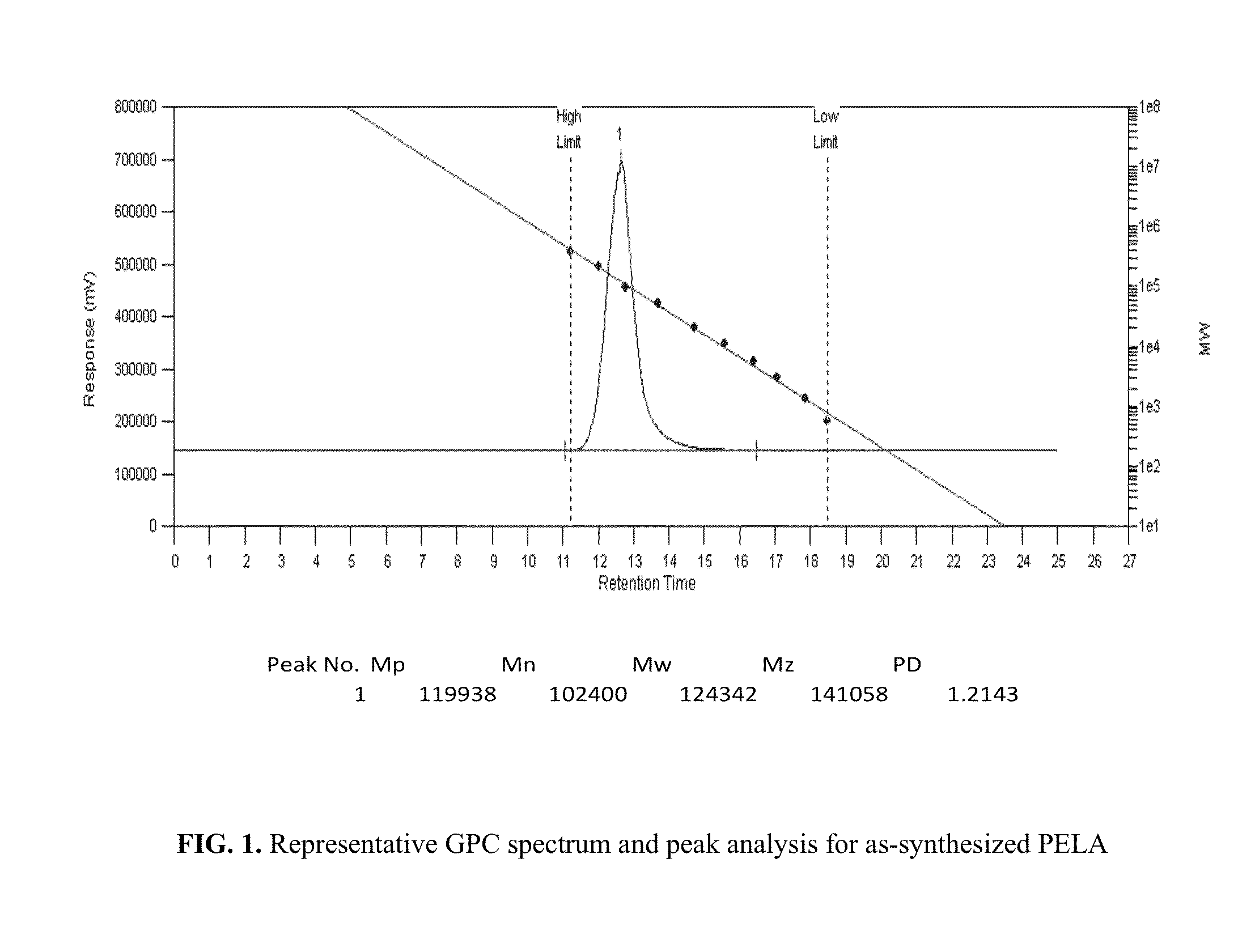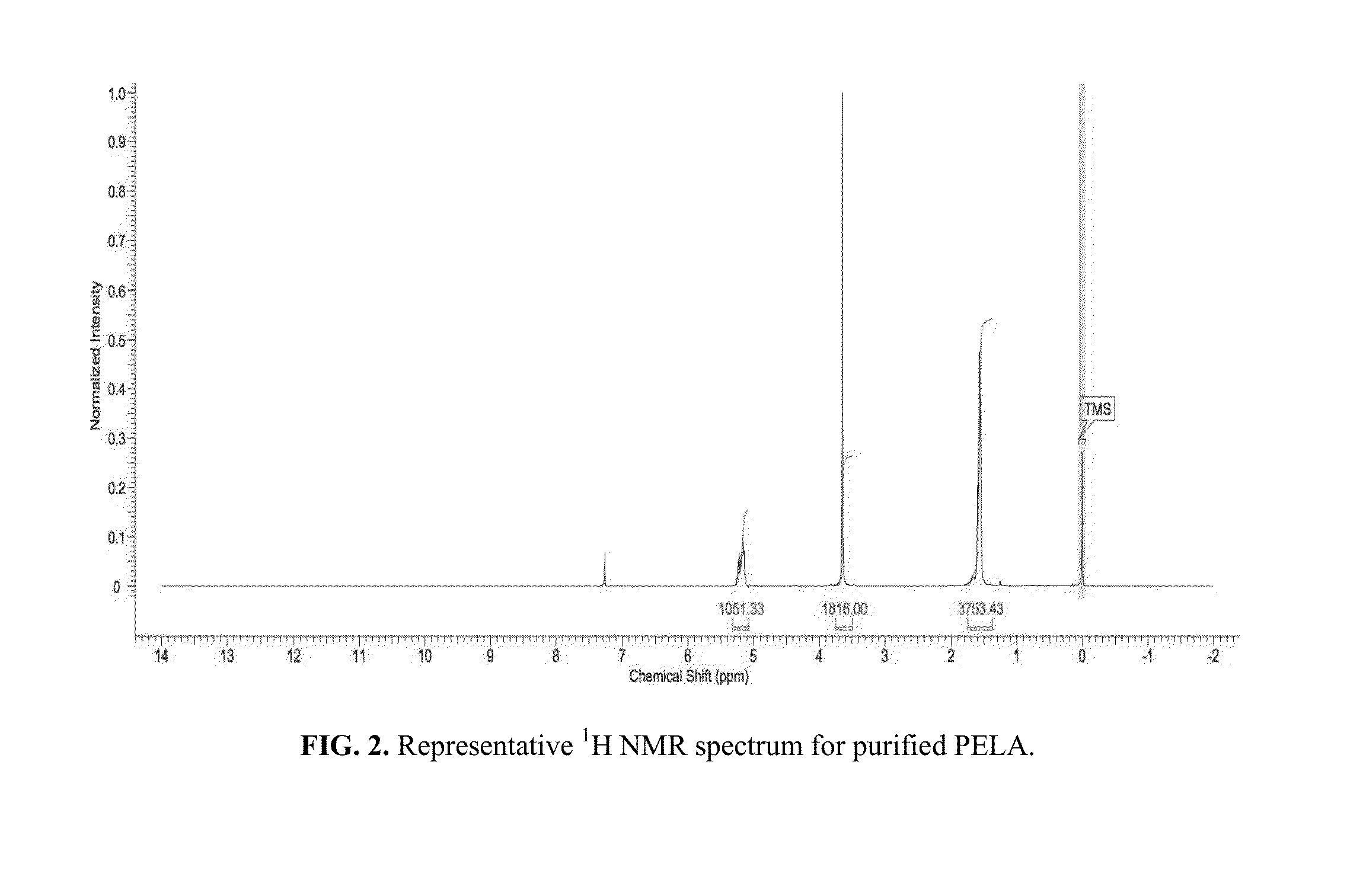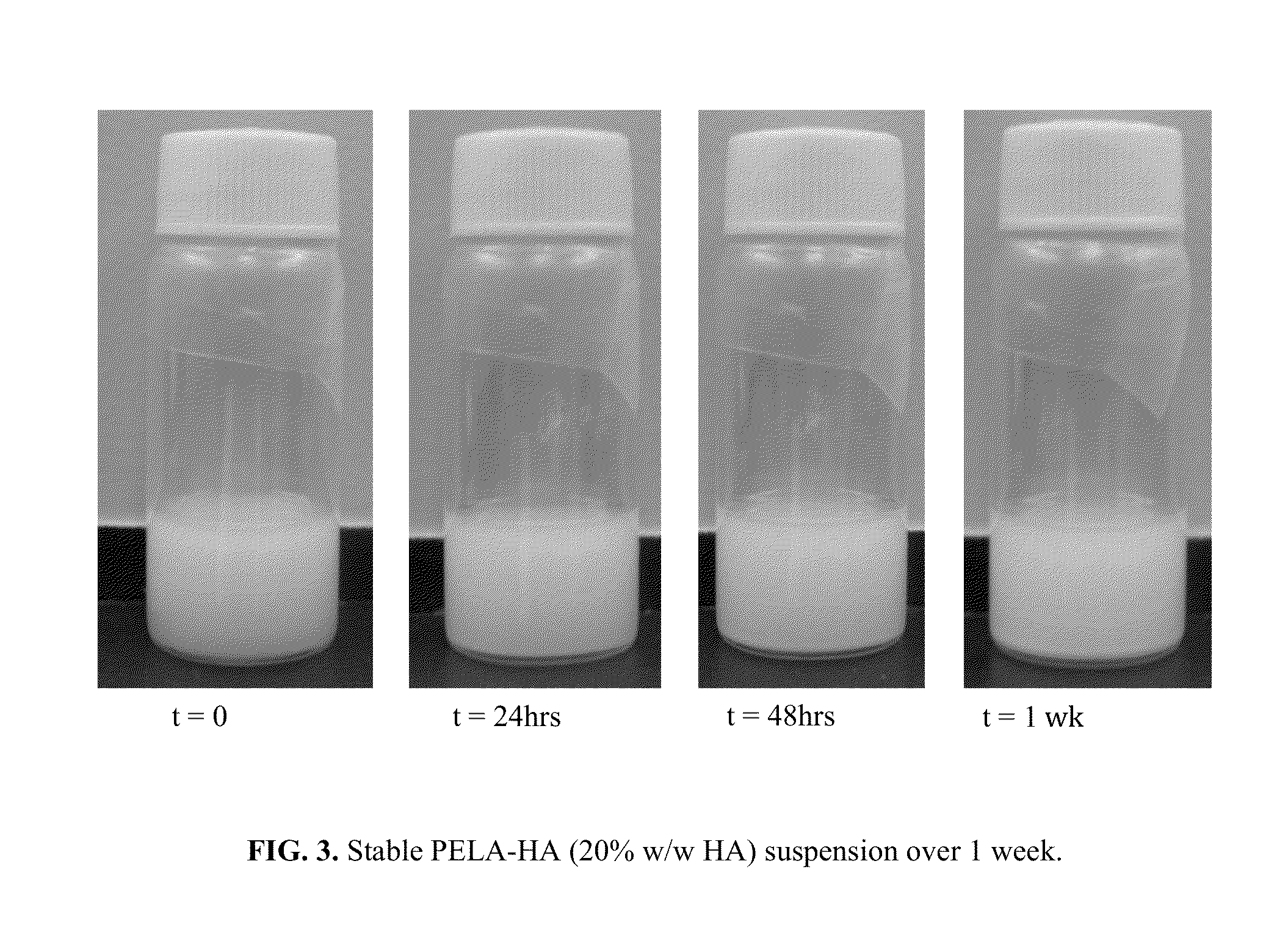Elastomeric and degradable high-mineral content polymer composites
a polymer and high-mineral content technology, applied in the field of polymer compositions, can solve the problems of high stiffness and brittleness, ha alone is not well suited for broad orthopedic applications, and the electropinning of various polymers with hydroxyapatite suffers from a variety of limitations, and achieves stable polymer-ha suspension and strengthens mechanical integrity
- Summary
- Abstract
- Description
- Claims
- Application Information
AI Technical Summary
Benefits of technology
Problems solved by technology
Method used
Image
Examples
examples
Electrospun, Biodegradable Composite of HA with Block Copolymer of poly(ethylene glycol) and poly(lactic acid)
[0056]PEG (20,000 Da) was used to initiate the ring-opening polymerization of cyclic D,L-Lactide forming the block copolymer PLA600-PEG454-PLA600 (PELA) or a composition of 80% w / w PLA and 20% w / w PEG. The reaction was performed at 130° C. under inert gas and catalyzed by 500 ppm of Sn(Oct)2. The resulting polymer was characterized by gas permeation chromatography (GPC) and nuclear magnetic resonance (NMR), representative GPC and NMR data are shown in FIG. 1 and FIG. 2. The PELA was dissolved in chloroform and purified by precipitation in methanol. To prepare the electrospinning solutions, HA (from 0% to 50% w / w) was added to a 80 / 20 blend of chloroform / dimethylformamide and sonicated for 30 min. PELA (25% w / v) was added to the solution and dissolved by stirring and vortexing.
[0057]The HA remained stably dispersed in the electrospinning solution for at least 1 week with mini...
PUM
| Property | Measurement | Unit |
|---|---|---|
| pH | aaaaa | aaaaa |
| voltage | aaaaa | aaaaa |
| flow rate | aaaaa | aaaaa |
Abstract
Description
Claims
Application Information
 Login to View More
Login to View More - R&D
- Intellectual Property
- Life Sciences
- Materials
- Tech Scout
- Unparalleled Data Quality
- Higher Quality Content
- 60% Fewer Hallucinations
Browse by: Latest US Patents, China's latest patents, Technical Efficacy Thesaurus, Application Domain, Technology Topic, Popular Technical Reports.
© 2025 PatSnap. All rights reserved.Legal|Privacy policy|Modern Slavery Act Transparency Statement|Sitemap|About US| Contact US: help@patsnap.com



